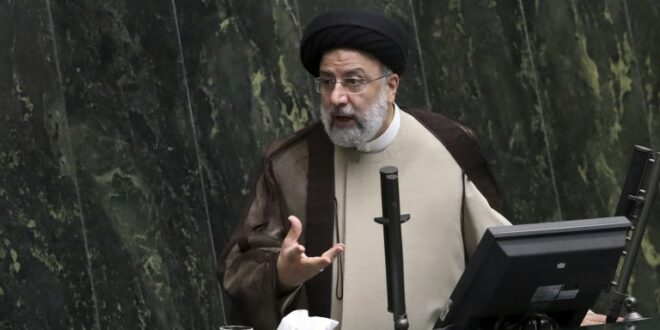A new cycle of attacks and responses between Iran and its adversaries threatens regional stability and the potential revival of the 2015 multilateral Iran nuclear agreement.
Israel has demonstrated a remarkable ability to execute operations targeting Iranian officials within Iran.
Iranian leaders appear to have decided to retaliate against the U.S. as a response to American efforts to enforce sanctions against Iran.
Iran continues to support attacks on U.S. personnel in Iraq to try to reduce U.S. influence there.
A year of dialogue between Iran and Saudi Arabia, and a spring-summer ceasefire in Yemen, raised hopes in the international community that a repeat of past cycles of Iran-related violence in the Persian Gulf region could be avoided. As of early June, however, sparring between Iran and its rivals has picked up, further destabilizing already unsettled global energy markets and harming prospects for dialogue and negotiation on regional flashpoints, like the conflict in Yemen. There does not appear to be any connection between the recent hostilities and the ongoing protests inside Iran. For weeks, Iranian officials have been reacting to protests linked to economic conditions and, most recently, the collapse of a tower in Abadan, in southwestern Iran, which killed more than 40 people.
Perhaps the most significant threat to regional stability comes in the form of a series of apparent Israeli special operations inside Iran, directed against the Islamic Revolutionary Guard Corps (IRGC) and Iranian military projects in Iran. On May 22, Hassan Sayad Khodayari, an officer of the IRGC’s Qods Force, which arms and trains pro-Iranian movements in the region, was assassinated in Tehran, the IRGC announced. Tehran acknowledged that he was part of the Qods Force contingent operating in Syria in support of President Bashar al-Assad’s regime. The attack was reminiscent of a November 2020 attack on an Iranian nuclear scientist, Mohsen Fakhrizadeh. On May 25, in a more ambitious operation also attributed to Israel, short-range quadcopter drones launched from well within Iran’s borders struck the sprawling Parchin facility, which is linked to Iran’s armed drone program. Israel and the United States suspect Iran of having conducted nuclear weapons research at Parchin. Iranian officials have consistently denied this, arguing that it is a non-nuclear military facility, and therefore off-limits to the International Atomic Energy Agency inspections process established by the 2015 Iran nuclear deal. The attacks demonstrate Israel’s significant capacity to recruit and deploy agents within Iran to carry out sophisticated attacks inside the country. However, because of Iran’s sensitivity about international access to Parchin, the May strike will certainly further complicate the stalled multilateral talks to restore the 2015 Iran nuclear agreement. Israeli leaders have long argued that, even if the nuclear agreement is revived, Iran has nuclear ambitions over the long term and that the international community should be prepared to use any means necessary to prevent a nuclear-armed Iran.
At the end of May, Iranian leaders evidently decided to demonstrate that the country is positioned to project power and defend its interests, even if they did not directly retaliate against Israel. On May 27, the IRGC stated that is naval forces had seized two Greek oil tankers off of Iran’s Persian Gulf coast. The capture was characterized as a direct response to Greece’s role in the U.S. seizure of crude oil from Iranian-flagged tanker Lana (formerly Pegas) in April. The Lana was among five vessels designated by Washington, two days before Russia’s invasion of Ukraine, for sanctions against Promsvyazbank—a bank viewed as critical to Russia’s defense sector. The Greek seizure of the Lana appeared to be an effort to enforce multilateral sanctions against Russia—and not specifically enforcement of U.S.-led sanctions on Iran’s oil exports. Iran-related energy sanctions have generally been enforced by financial and trade penalties, rather than through seizures of ships or their cargo. Still, the Iranian capture of the Greek ships—and Tehran’s confiscation of their oil cargo—appear to represent an escalation by Tehran against U.S. economic pressure. Tehran evidently calculates that its actions can deter the United States from more aggressively enforcing sanctions against Iran should negotiations to restore the 2015 multilateral nuclear deal break down entirely.
Tehran sought to reinforce its message to the United States by following up the tanker seizure with the latest in a series of attacks targeting U.S. personnel in Iraq. Iranian leaders have never wavered from their vow to avenge the January 2020 killing of legendary Qods Force commander Qasem Soleimani by driving all U.S. military personnel out of Iraq. On May 30, an Iraqi group calling itself the “International Resistance” (almost certainly an offshoot of Iran’s main Iraqi proxy, Kata’ib Hezbollah) fired five Grad rockets at Ain al-Asad airbase in Iraq’s western Anbar province. Although the rockets impacted close to where U.S. servicemembers are housed, only minor damage was reported, and no casualties occurred. Many of the 2,500 U.S. forces still in Iraq are deployed at al-Asad, which was the epicenter of the January 2020 Iranian long-range ballistic missile strike that represented Tehran’s retaliation for the Soleimani killing. Iranian-backed Shia militia groups have also attacked Iraqi politicians, including incumbent Prime Minister Mustafa al-Kadhimi, who want U.S. troops to remain in Iraq advising government forces in the fight against Islamic State. Recent Iranian provocations have not directly accomplished any clear strategic goals; however, Tehran’s willingness to take aggressive action has caused the United States, Israel, and the Gulf states to reconsider how they seek to apply pressure to the Iranian regime. Deterring Iran’s adversaries appears to be a goal that Iranian leaders see as attainable.
 Eurasia Press & News
Eurasia Press & News


